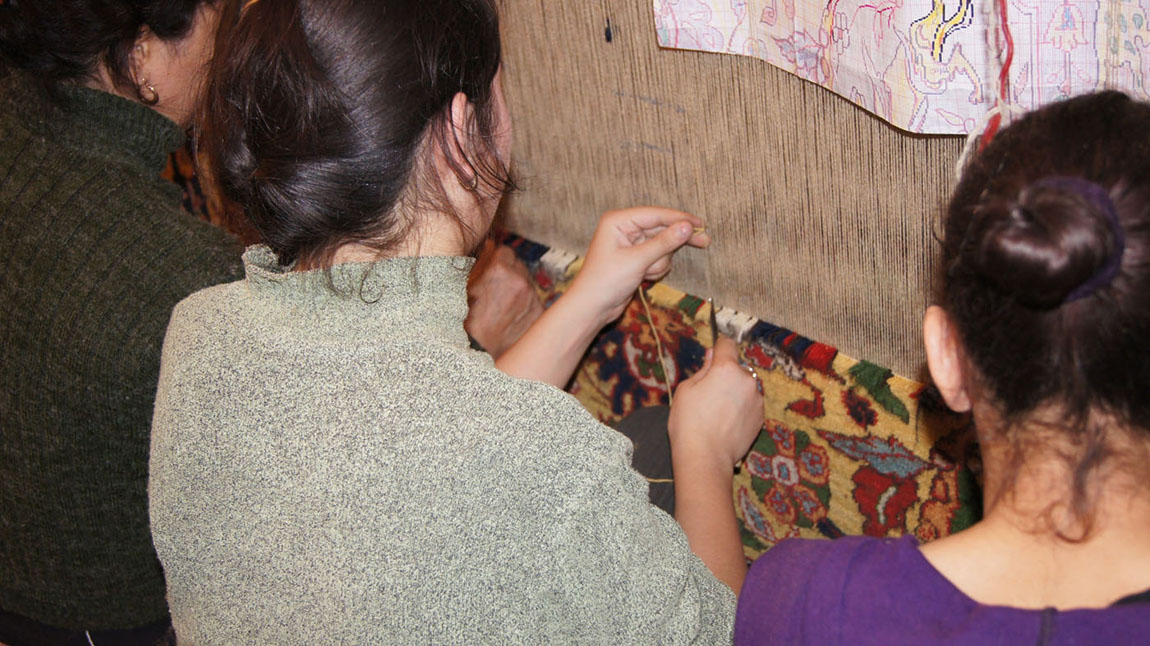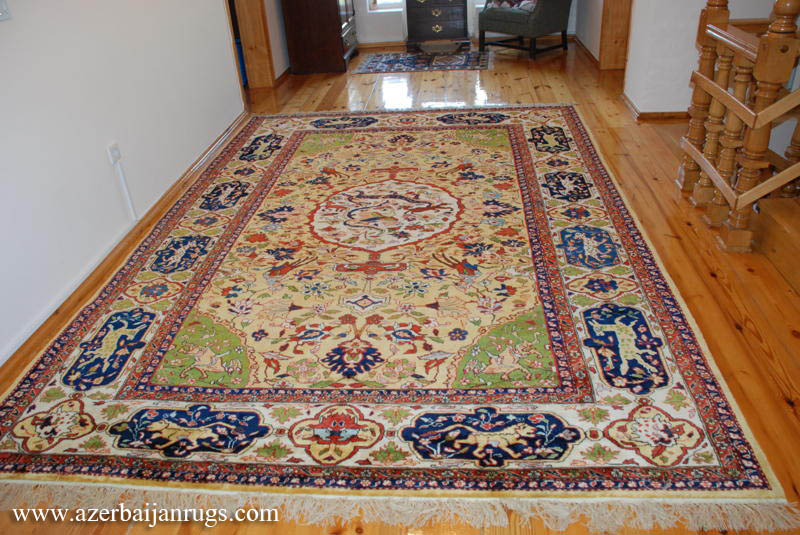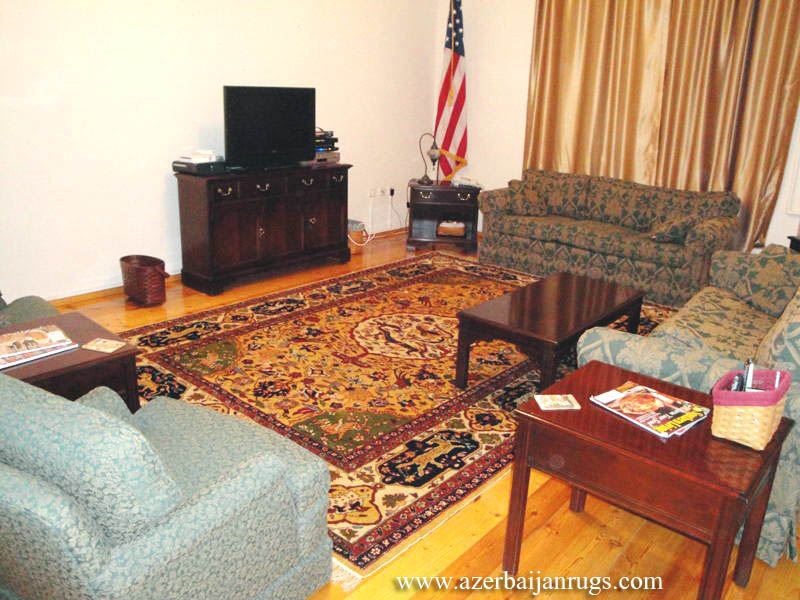
| Inspired by the desing
of a 1600s historical Safavid Kashan kilim (Textile Museum, Washington), "Dragon & Phoenix" Code: SFV-TM04 Size (metric): 216x295cm Size (ft): 7'1"x9'8" Area: 6.3m2 Weaving period: four months (by four weavers) Density: 170 000 knots per square meter, totally 1 100 000 (1 million and one hundred thousand) knots Ends: knotted bundles Colors: medium madder red, yellow, light yellow, khaki, dark yellow, midnight blue, medium blue, green (2), ivory, dark brown, light brown, maroon, gold brown. Dyes: 100% natural dyes: madder, weld (Reseda Luteola), woad, indigo, pomegranate skins, walnut husks, onion skins, natural brown sheep wool, natural ivory sheep wool Materials: Handcarded and handspun wool for pile, ivory wool warps (natural ivory and brown twist) and ivory wool wefts (two shots). 1cm of flatwoven kilim ends at both sides. - wool on wool Knots: Gördes (Turkish, symmetrical) Pile height: 0.5cm Ends: five rows of decorative knotted meshwork Inscriptions: 1439 (=2018 weaving date), tamga (tribal seal) of Afshar tribe  Weaver: Khayala, Zara, Yasemen Weaving Period: Five months Handwoven in Azerbaijan |
Contact us for more information about this rug
Contact us for more information about this rug

| the
medallion and field of a silk rug (kilim) from Kāshān, Safavid Iran, 16th
or 17th century, Textile Museum Collection, Washington, D.C.; photography, Otto E. Nelson. The Safavid Dragon and Phoenix silk kilim was acquired in 1926 by a collectioner whose name was Myers. |
| Three classes
of all-silk carpets of the Safavid period (16th century) are credited to
Kāshān: 1) The first includes three large extant carpets with medallion systems and varied hunting scenes that appear between centerpiece and corners. The two best-known of these are counted among the world’s finest carpets.
|




Contact us for more information about this rug

|
For more information about the above rug or to place an order please email vd@azerbaijanrugs.com (Baku, Azerbaijan) or ra@azerbaijanrugs.com (San Francisco Bay Area). We will get back to you within 24 hours or less. |